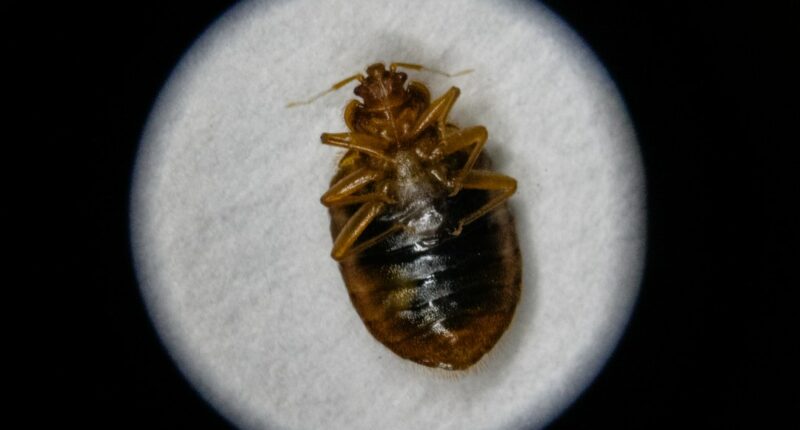Share this @internewscast.com
(NewsNation) — Bed bugs are hard to see, but they pack a punch when they bite, leaving behind small, itchy marks.
According to the Centers for Disease Control and Prevention, bed bugs are not known to transmit diseases to humans, yet infestations can still be troubling as they frequently lead to discomfort and stress.
What do bed bugs look like?
Bed bugs are small, flat, reddish-brown, and wingless insects. These pests, about the size of Lincoln’s head on a penny, rely on feeding on blood for survival, as stated by the CDC.

Do bed bug bites itch?
While bed bugs do not represent a significant health risk, they can result in severe itching, potentially causing sleep deprivation and secondary skin infections due to scratching.
Most people don’t notice they’ve been bitten until bite marks, which look like mosquito or flea bites, appear one to several days later. The area will be slightly swollen and red, and the marks can appear in a random pattern or in a straight line.
How to treat bed bugs
For skin irritation, the CDC recommends applying anti-itch cream to the affected areas.
To treat the general infestation, contact a pest control company experienced in treating bed bugs to spray insecticide.
In the meantime, you can take steps to keep the infestation from spreading by: sealing small crevices where bedbugs may be lurking with caulk; removing infested items, or throwing them away by sealing them in a plastic bag; buying protective covers for mattresses, using a clothes dryer to kill bed bugs infesting your laundry or closets; and vacuuming the affected areas.
The Environmental Protection Agency offers an at-home step-by-step guide to treating bed bugs.













